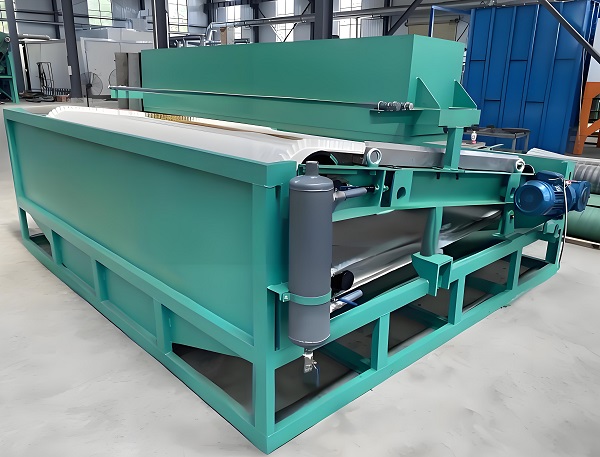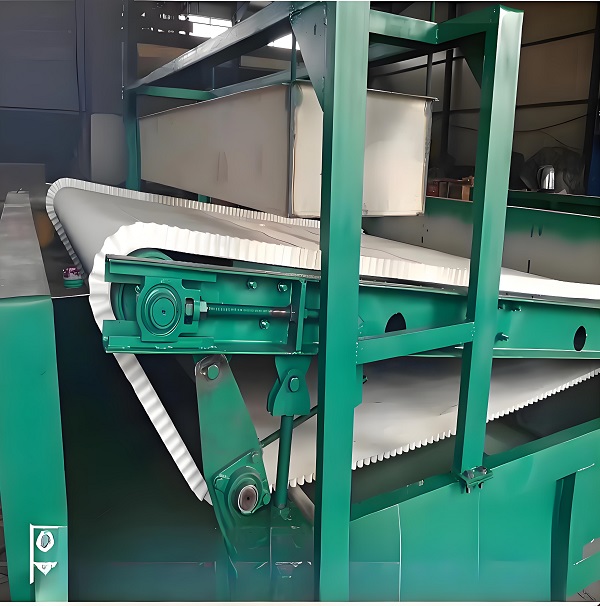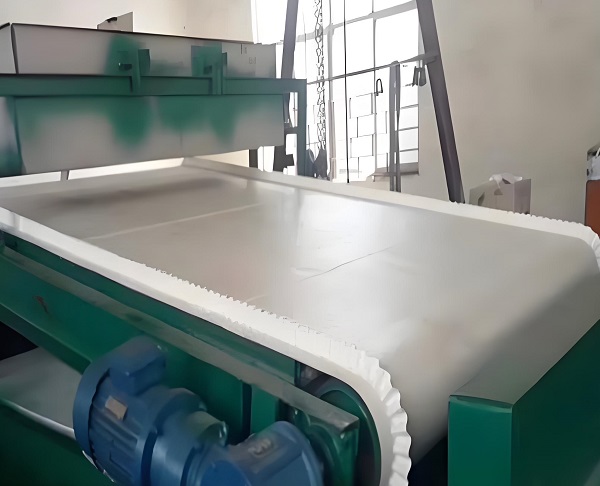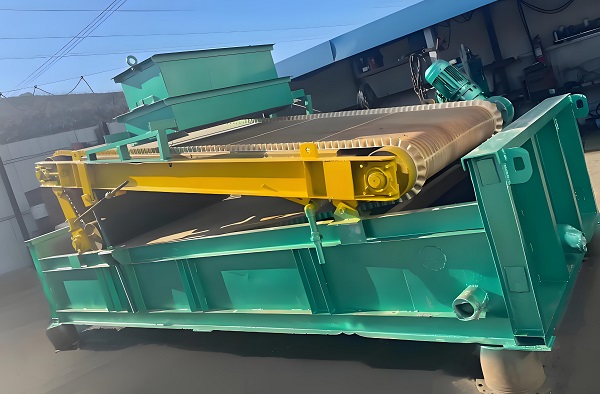Magnetic separators are core equipment for separating magnetic materials in mineral processing, solid waste recycling, and other fields. Their screening efficiency directly impacts magnetic mineral recovery, impurity removal, and overall production profitability. However, in actual production, issues such as parameter imbalance, inadequate pretreatment, and equipment aging often result in efficiency falling below design standards. To address these industry pain points, this article systematically analyzes improvement measures from four perspectives: equipment parameters, material pretreatment, structural upgrades, and operations and maintenance management, providing practical solutions for efficient production.
Magnetic separators are core equipment for separating magnetic materials in mineral processing, solid waste recycling, and environmental protection. Their screening efficiency directly determines magnetic mineral recovery, impurity removal, and overall production profitability. In some current production scenarios, due to issues such as parameter imbalance, inadequate material pretreatment, and equipment aging, magnetic separator efficiency often falls below design standards (e.g., mineral recovery rates less than 85% and solid waste purity less than 90%). The following provides 12 targeted improvement measures from four perspectives: equipment parameter adjustment, material pretreatment optimization, structural upgrades, and enhanced operations and maintenance management. These measures cover mainstream magnetic separator types, including permanent magnet, electromagnetic, wet, and dry types.
Precise Control of Core Equipment Parameters: Fundamental Optimization to Match Material Characteristics

The key factor influencing magnetic separator screening efficiency is the compatibility of equipment parameters with material characteristics. By specifically adjusting key parameters such as magnetic field, rotational speed, and spacing, separation accuracy can be rapidly improved.
1. Gradual Adaptation of Magnetic Field Intensity and Gradient
Magnetic field intensity should be adjusted based on the magnetic strength of the material. For strongly magnetic materials (such as magnetite and iron filings), the magnetic field intensity of a permanent magnetic drum separator can be controlled between 1000-2000 gs to avoid excessive magnetic field absorption of gangue impurities. For weakly magnetic materials (such as hematite and limonite), an electromagnetic separator should be used with the magnetic field intensity increased to 3000-5000 gs. This, combined with a gradient magnetic field design (where the magnetic field intensity increases along the separation direction), enhances the absorption of weakly magnetic particles. An iron ore concentrator increased hematite recovery from 78% to 89% by optimizing the magnetic field intensity from 2200 gs to 3500 gs.
The design for enhancing the magnetic field gradient is also crucial. Using a "multi-pole arrangement + shaped magnetic system" structure, the traditional planar magnetic system is replaced with an arc-shaped or stepped magnetic system, increasing the magnetic field gradient by over 40%. This effectively captures fine-grained magnetic particles (particle size <0.074mm) and reduces magnetic material loss.
2. Dynamic Balance between Drum Speed and Processing Volume
Drum speed directly affects the material residence time within the magnetic separator and the separation efficiency. Excessively high speeds (e.g., >30 rpm) shorten the material residence time, causing magnetic particles to be ejected before they are fully absorbed. Excessively low speeds (e.g., <10 rpm) can easily cause material accumulation, reducing processing efficiency. When processing large ferromagnetic materials with a dry magnetic separator, the speed should be controlled at 15-20 rpm. When separating fine-grained minerals with a wet magnetic separator, the speed can be increased to 25-30 rpm, achieving efficient separation through a balance between centrifugal and magnetic forces. A "speed-to-capacity" linkage adjustment mechanism should be established. For every 10% increase in feed rate, the speed should be increased by 5%-8% to prevent excessive accumulation of material on the drum surface (recommended thickness: no more than 5mm). A construction waste recycling plant uses a variable frequency speed control system to automatically adjust the magnetic separator speed based on the belt conveyor feed flow rate, increasing the iron removal rate from 88% to 96%.
3. Fine Adjustment of Magnetic Roller Spacing and Material Layer Thickness
The spacing between the magnetic roller and the unloading scraper must be kept within a reasonable range. A spacing that is too large (>5mm) will result in weak magnetic material adhesion and easy dislodging during conveying. A spacing that is too small (<1mm) may scratch the drum surface, shortening the equipment life. Typically, the spacing is set based on the particle size of the magnetic material. For processing coarse particles with a particle size of 5-20mm, the spacing is set to 3-4mm; for separating fine particles with a particle size of <1mm, the spacing is adjusted to 1-2mm. The material layer thickness must match the magnetic field's penetration. By adjusting the height of the feed baffle, the material layer thickness can be controlled within the effective magnetic field range (generally 1/20-1/15 of the drum diameter). For wet magnetic separators, increasing the flushing water flow rate (0.5-1.5 m³/h) can loosen and fluidize the material layer, reducing interference between particles and further improving separation efficiency.
Upgrading the Material Pretreatment System: Reducing Source Control of Sorting Interference

The material's particle size, moisture content, and impurity content directly impact the magnetic separator's separation environment. By improving the pretreatment process, the impact of blockage, adhesion, and other issues on screening efficiency can be significantly reduced.
1. Particle Classification Pretreatment Reduces Sorting Load
Using a "classification first, then magnetic separation" process design, the material is separated by vibrating screen into three particle size categories: coarse (>20 mm), medium (5-20 mm), and fine (<5 mm). Each particle size is then fed into a corresponding magnetic separator for processing. Coarse-grained materials require a strong magnetic field and low speed magnetic separator, while fine-grained materials require high-gradient, high-speed equipment to avoid incomplete separation due to large particle size differences. A metal mine reduced the magnetic separator's processing load by 30% and increased magnetic mineral recovery by 12% by adding a double-deck grading screen.
For materials containing large impurities (such as concrete blocks and scrap steel), a jaw crusher or shearing machine should be added before magnetic separation to control the material particle size within the magnetic separator's processing range and prevent large impurities from clogging the equipment or scratching the magnetic roller surface.
2. Control humidity and viscosity to prevent material sticking
Excessive material humidity (>15%) can easily cause particles to stick together, resulting in magnetic particles being encapsulated by non-magnetic material and unable to effectively interact with the magnetic field. For high-moisture materials (such as tailings slurry and food waste), the following measures can be adopted: A hot air dryer can be added before the dry magnetic separator to reduce the moisture content to below 8%. In wet magnetic separators, a dispersant (such as polyacrylamide, at a dosage of 0.1-0.3‰) can be added to break down the cohesive forces between particles, allowing the slurry to enter the separation zone in a suspended state.
In solid waste treatment scenarios, for highly viscous materials (such as sludge and starch residue), a spiral agitator can be installed at the feed inlet, combined with a high-pressure air purge device, to loosen the material before entering the magnetic separator, preventing compaction that could affect separation.
3. Pre-removal of Non-Magnetic Impurities
Large non-magnetic impurities (such as rocks, plastics, and wood) in the material occupy the effective separation space of the magnetic separator, reducing the probability of contact between the magnetic material and the magnetic rollers. By installing impurity removal equipment before the magnetic separator, sorting efficiency can be significantly improved. A vibrating screen is used to remove large impurities with a particle size greater than 30mm; an airflow separator is installed to separate lightweight plastics, paper, and other debris. For materials containing a high concentration of impurities other than metals, a manual sorting platform can be added to pre-select impurities that are difficult to separate mechanically.
A waste incineration power plant added a drum screen and an air separator before the magnetic separator to pre-select impurities such as stones and plastic. This increased the magnetic separator's iron recovery rate from 85% to 97%, while also reducing the equipment's blockage failure rate from five times per month to less than one.
Magnetic Separator Structure and Component Upgrades: Hardware Modifications to Enhance Equipment Adaptability

By optimizing the magnetic separator's core structure and replacing high-performance components, the equipment's sorting capacity and operational stability can be fundamentally improved. This is suitable for use in scenarios where equipment is aging or the existing structure lacks adaptability.
1. Optimizing the Magnetic System Structure to Improve Magnetic Field Efficiency
Upgrading the traditional "planar magnetic system" to a "three-dimensional multi-pole magnetic system," using NdFeB permanent magnets instead of ordinary ferrite magnets, increases magnetic field strength by over 50% and extends the effective magnetic field range from 50mm to 80mm. For sorting weakly magnetic materials, a "permanent magnet + electromagnetic composite magnetic system" can be used. Electromagnetic coils enhance the local magnetic field gradient, significantly improving the adsorption capacity of weakly magnetic particles.
The magnetic system layout utilizes an "alternating polarity arrangement," with adjacent magnetic poles having opposite polarity, forming a closed magnetic field loop, reducing magnetic field leakage. This ensures that magnetic materials adhere more firmly to the drum surface, preventing them from falling off during conveying. A mineral processing plant, through this magnetic system upgrade, increased the recovery rate of weakly magnetic hematite from 75% to 90%.
2. Performance Upgrades for the Drum and Unloading Device
The drum surface is treated with a wear-resistant and corrosion-resistant coating, such as spray-coating with tungsten carbide or polyurethane. This not only enhances surface wear resistance (extending service life by 2-3 times) but also reduces material adhesion. For wet magnetic separators, stainless steel drums can be used with surface polishing to reduce the corrosion effects of slurry on the drum.
The unloading device has been upgraded to a combined "elastic scraper + high-pressure flushing" structure. The scraper, made of polyurethane elastic material, adheres tightly to the drum surface (contact pressure 0.1-0.2 MPa), ensuring thorough removal of magnetic material. High-pressure water jets (pressure 1.5-2.0 MPa) are also installed on the scraper to promptly remove any material adhering to the scraper and prevent secondary mixing caused by incomplete unloading. This upgrade has resulted in a 25% increase in unloading efficiency at a wet concentrator, with the amount of residual material on the drum surface reduced to less than 0.5%.
3. Improved Sealing and Anti-blocking Structure
To address dust contamination and fine-particle material escape in dry magnetic separators, a fully enclosed design, coupled with a negative pressure dust collection device, controls dust concentration within the separator to below 5mg/m³ and prevents fine magnetic material from being lost in the airflow. Flexible sealing curtains are installed at the feed and discharge ports to reduce material splashing and dust spillage.
For applications prone to material blockage, a vibration device (vibration frequency of 20-30Hz) is added to the bottom of the separator. Combined with a curved bottom plate design, this allows non-magnetic material to be quickly discharged, preventing accumulation and blockage within the separator. By installing a vibration anti-blocking device, a construction waste treatment plant reduced equipment downtime due to material blockage from 8 hours per month to less than 1 hour.
Strengthening the Operation and Maintenance Management System: Long-term Support for Efficient Equipment Operation

Scientific operation and maintenance management is key to maintaining the long-term and efficient operation of magnetic separators. By establishing standardized operation, maintenance, and monitoring procedures, equipment failures can be effectively reduced and the efficient operation cycle can be extended.
1. Establish and Implement Standardized Operating Procedures
Develop a "one-machine-one-policy" operating manual to clearly define parameter settings (magnetic field strength, speed, spacing, etc.) for different material types, pre-startup inspection items (magnetic system integrity, scraper gap, lubrication status, etc.), and post-downtime cleanup procedures. Regular operator training is conducted, focusing on parameter adjustment skills and fault diagnosis capabilities to ensure standardized operating procedures.
Establish a shift handover inspection system, requiring operators to record equipment operating parameters, processing capacity, sorting efficiency, and other data. If any parameter anomalies or unusual noises are detected, the machine should be shut down for investigation to prevent minor issues from escalating into major failures. By implementing standardized operations, one mineral processing plant has improved the operational stability of its magnetic separator by 40% and reduced the equipment failure rate by 60%.
2. Regular Maintenance and Replacement of Consumable Parts
Develop a detailed maintenance plan: Daily check the surface of the magnetic roller, scraper wear, and lubrication system oil pressure; weekly clean residual material from the machine body and check for loose magnetics; monthly test magnetic field strength (using a gaussmeter); re-magnetize or replace the magnets if the strength drops by more than 10%; quarterly change the lubricant (using lithium-based grease), and check bearing temperature and seal performance.
Consumable parts must be stocked and replaced promptly: scraper wear exceeding 2mm should be replaced immediately; roller coating peeling should be repaired promptly; conveyor belts should be adjusted or replaced promptly if they deviate or deteriorate. By strictly implementing the maintenance plan, a solid waste recycling plant has increased the mean time between failures of its magnetic separator from 300 hours to 800 hours.
3. Installation and Application of an Intelligent Monitoring System
Equip the magnetic separator with multi-dimensional monitoring equipment: magnetic field sensors monitor real-time changes in magnetic field strength, speed sensors monitor roller speed, vibration sensors check equipment stability, and cameras monitor the separation process in real time. All data is uploaded to the central control room via the IoT platform, and an "abnormal warning model" is established. Automatic alarms are triggered when parameters exceed normal ranges, alerting operations and maintenance personnel to address them promptly.

Some advanced companies have introduced AI visual recognition technology. Using cameras to capture images of the material at the magnetic separator's outlet, algorithms analyze the purity of the magnetic material, and automatically adjust magnetic field strength and speed parameters, achieving a closed-loop management system of "real-time monitoring - automatic control - efficiency optimization." After implementing this system, one smart mine reduced the fluctuation in magnetic separation efficiency from ±8% to ±2%.
Improving the screening efficiency of magnetic separators is a systematic project that requires addressing four core aspects: parameter adaptation, source control, hardware upgrades, and operational support. From precisely controlling the magnetic field and speed based on material characteristics to reducing sorting interference through pretreatment, from optimizing the magnetic system and drum structure to enhance equipment performance, to establishing a standardized operation and maintenance system to ensure long-term operation, each measure must be flexibly implemented based on the specific application scenario. With the pursuit of high recovery rates in mineral processing, high purity in solid waste treatment, and low energy consumption in the environmental protection sector, only by deeply integrating technological optimization with management upgrades can we achieve sustained improvements in magnetic separator screening efficiency and create greater economic and environmental benefits for enterprises.
Improving magnetic separator screening efficiency requires a systematic approach encompassing "parameter adaptation - source control - hardware upgrades - and operational support." This approach involves precisely adjusting parameters like magnetic field and speed to suit material characteristics, reducing sorting interference through pretreatment, enhancing equipment performance through structural modifications, and ensuring long-term operation through scientific operation and maintenance. These four interconnected dimensions address immediate efficiency issues while laying a solid foundation for long-term stability, ultimately achieving both improved economic and environmental benefits.
Save Time! Get A Detailed Quotation Quickly.
